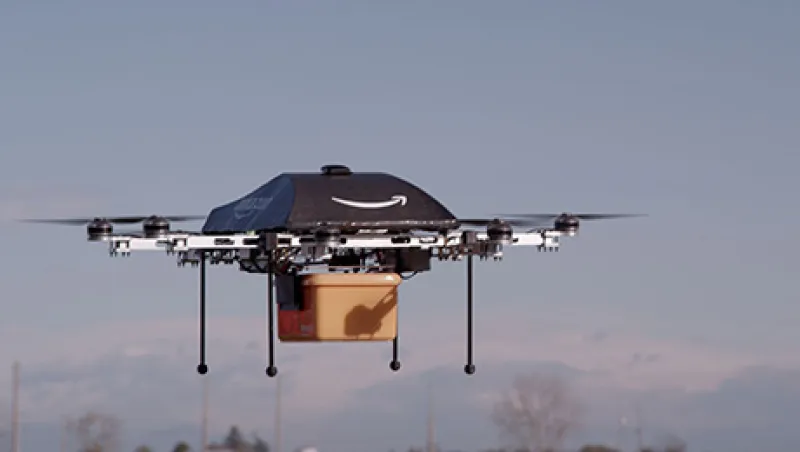
The Amazon.com Inc. Prime Air octocopter is seen at an undisclosed location in this undated handout photograph released to the media on Monday, Dec. 2, 2013. Amazon.com Chief Executive Jeff Bezos said the world's largest e-commerce company is testing drones to deliver goods, as it works to improves efficiency and speed in getting products to consumers. Source: Amazon.com Inc. via Bloomberg EDITOR'S NOTE: NO SALES. EDITORIAL USE ONLY
via Bloomberg

